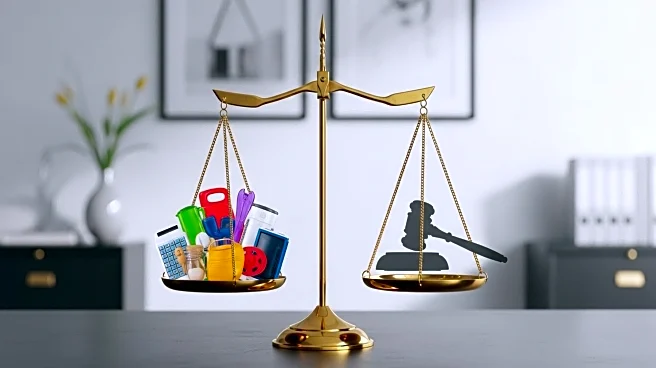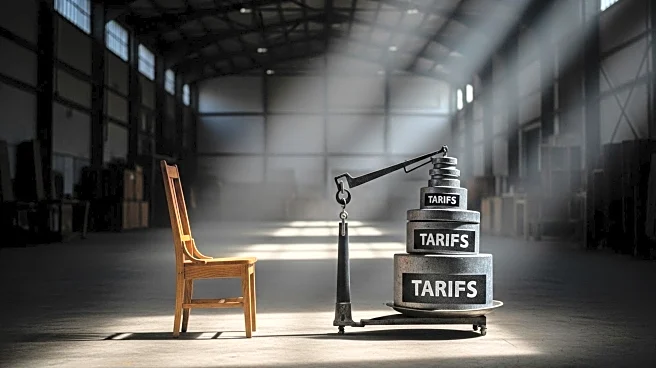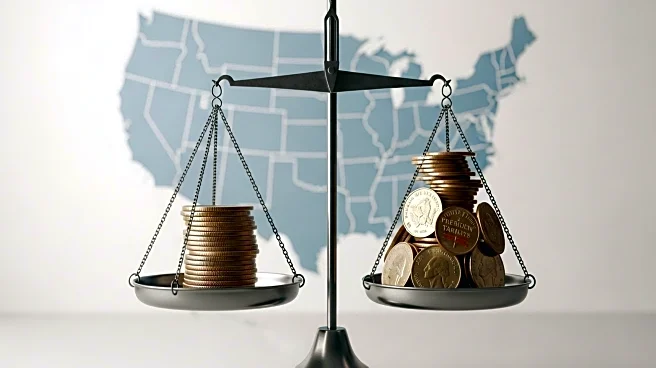What's Happening?
The latest round of tariffs imposed by President Trump, targeting cabinets, furniture, timber, and lumber, is causing significant economic disruptions. The tariffs are leading to higher prices for American
consumers, lower margins for U.S. firms, and decreased exports in key industries. A KPMG survey indicates that 60% of businesses reported decreased overseas sales due to the tariffs. The impact is also felt by smaller companies, with some announcing layoffs due to weakened demand. The tariffs are contributing to investment paralysis and increasing the risk of an economic slowdown.
Why It's Important?
The tariffs are affecting various sectors of the U.S. economy, from manufacturing to agriculture, leading to higher costs for consumers and businesses. The economic strain could result in reduced consumer spending and investment, potentially slowing economic growth. The situation highlights the broader implications of trade policies on domestic industries and the need for stable rules and open markets to foster economic prosperity.
What's Next?
Businesses may continue to face challenges in adapting to the tariffs, potentially leading to further layoffs and closures. The upcoming Supreme Court case of V.O.S. Selections Inc. vs. Trump could set a precedent for how tariffs are implemented and challenged legally. Policymakers might need to address the economic impact of tariffs and consider alternative strategies to support affected industries.
Beyond the Headlines
The tariffs are prompting discussions on the balance between protectionism and free trade, with implications for U.S. economic policy and international relations. The impact on supply chains and consumer prices underscores the complexity of trade policies and their effects on everyday commerce. The situation may lead to long-term shifts in trade practices and economic strategies.











